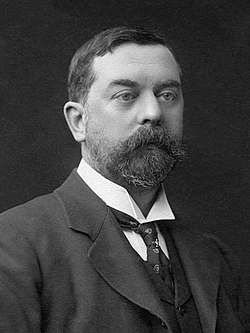Early Life & Background
John Singer Sargent, born on January 12, 1856, in Florence, Italy, became one of the most celebrated portrait painters of his era. His parents, Dr. FitzWilliam Sargent and Mary Newbold Singer, were American expatriates who chose to raise their children in Europe, traveling between Italy, France, and Germany. This nomadic lifestyle gave Sargent a rich cultural background and early exposure to the arts.
Encouraged by his mother, who had an artistic eye, Sargent showed remarkable talent from a young age. His natural ability was refined when he entered the École des Beaux-Arts in Paris in 1874. There, he studied under the noted painter Carolus-Duran, who emphasized free brushwork and capturing the essence of a subject rather than rigid formalism. This training would shape Sargent’s distinctive style and set him apart from his contemporaries.
Career Journey & Major Achievements
Sargent quickly gained attention in the Paris art scene. By his twenties, he was exhibiting works at the Paris Salon, including the highly praised Portrait of Carolus-Duran in 1879. His bold brushstrokes and ability to breathe life into his portraits made him a rising star.
His most controversial yet career-defining work came in 1884 with Portrait of Madame X. Intended as a masterpiece, it scandalized the Paris elite due to its provocative pose and modern style. Though the backlash prompted him to move to London, the painting has since become one of his most celebrated works, showcasing his daring vision.
In London, Sargent’s reputation soared. He became the portrait artist of choice for high society, painting aristocrats, cultural leaders, and prominent figures. His works, including Lady Agnew of Lochnaw, The Wyndham Sisters, and Ellen Terry as Lady Macbeth, demonstrated his ability to capture both the elegance and personality of his sitters.
Sargent was not limited to portraiture. His landscapes and watercolors revealed a freer, more experimental side. He also accepted monumental commissions, such as the murals for the Boston Public Library and the Museum of Fine Arts in Boston. These large-scale works proved his range as an artist and cemented his influence in both Europe and America.
By 1907, despite his success, Sargent grew tired of commissioned portraits. He shifted his attention toward painting outdoors, producing luminous watercolors and landscapes that highlighted his love of travel and spontaneity. This move reflected his unwillingness to be confined by expectations, showing his true passion for artistic exploration.
Personal Life & Interests
Though Sargent spent much of his time painting the rich and powerful, he was himself a private man. He never married, and much of his personal life remains a mystery. Friends described him as witty, reserved, and wholly dedicated to his art.
Sargent traveled extensively, often carrying his brushes and sketchbooks to capture scenes from Venice, the Alps, the Middle East, and North Africa. His watercolors from these journeys are among his most beloved works today, celebrated for their immediacy and vibrancy.
He was also deeply connected to music. Many of his close companions were musicians, and he frequently painted performers. His sensitivity to rhythm and harmony found its way into his paintings, giving them a musical quality that resonated with viewers.
Awards, Recognition & Notable Contributions
Sargent’s brilliance did not go unnoticed. He was elected to the Royal Academy in London, honored with the French Legion of Honor, and embraced by artistic institutions across the United States and Europe. His murals in Boston, particularly the Triumph of Religion series in the Public Library, became defining works of American public art, blending classical themes with modern execution.
His portraits offered not just technical mastery but cultural documentation of a changing world. Through his work, he immortalized the faces and fashions of an era, giving future generations a glimpse into the social dynamics of the late nineteenth and early twentieth centuries.
Legacy, Influence & Impact
John Singer Sargent left behind a legacy that continues to inspire artists and captivate audiences. His ability to merge classical technique with modern impressionistic influence positioned him as a bridge between two eras of art. His brushwork, celebrated for its energy and vitality, influenced not only portraitists but also painters eager to balance realism with expressive freedom.
Today, his works are displayed in major museums such as the Metropolitan Museum of Art in New York, the National Gallery in London, and the Musée d’Orsay in Paris. Scholars regard him as both a chronicler of society and a pioneer who pushed portraiture into new territory.
Perhaps what makes Sargent enduringly influential is his refusal to be boxed into one role. Though celebrated as the premier portraitist of his time, he chose to expand into landscapes, murals, and experimental watercolors. His creative journey is a reminder of the importance of evolving as an artist, of staying true to personal vision rather than public expectation.
Final Thoughts
John Singer Sargent’s life was dedicated to the pursuit of beauty, truth, and innovation in art. From his upbringing in Europe to his rise as one of the world’s most sought-after portraitists, he left behind a body of work that transcends time. His paintings capture not only faces but emotions, personalities, and the cultural heartbeat of his age. Today, his art continues to inspire admiration and scholarly study, proving that Sargent was more than just a painter of portraits—he was a painter of life.

